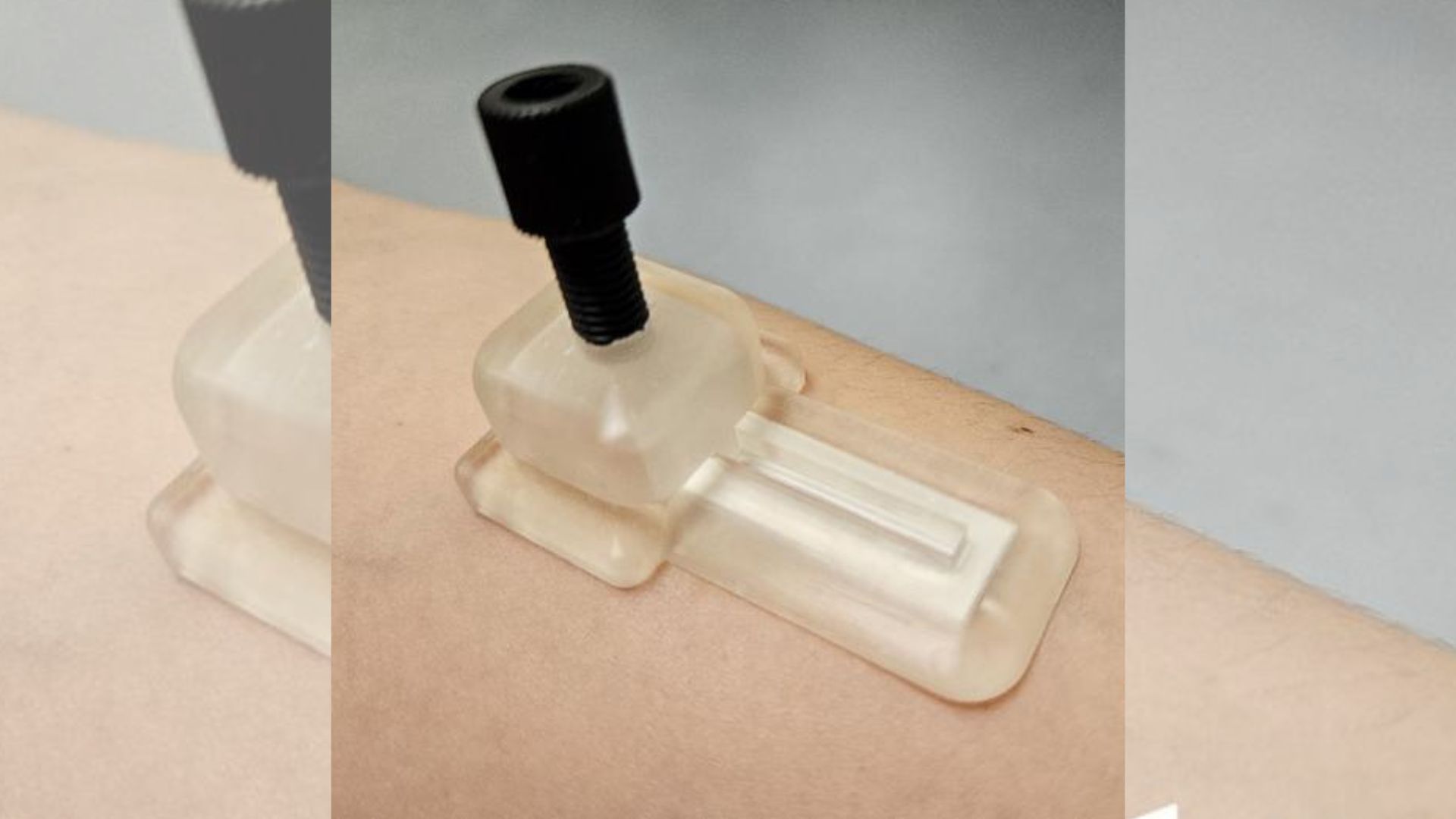Researchers have developed a self-powered microneedle patch that can collect health biomarker samples without blood, batteries, or external devices. In proof-of-concept tests using synthetic skin, the patch successfully collected biomarkers over periods ranging from 15 minutes to 24 hours.
The development could transform how people monitor stress, hormones, and other health indicators at home or in clinical settings.
Sampling fluid beneath skin
“Biomarkers are measurable indicators of biological processes, which can help us monitor health and diagnose medical conditions,” says Michael Daniele, corresponding author of the paper.
“The vast majority of conventional biomarker testing relies on taking blood samples. In addition to being unpleasant, blood samples also pose challenges for health professionals and developers. You need to remove the platelets, red blood cells, and so on before testing the relevant fluid.”
The patch uses microneedles to collect dermal interstitial fluid (ISF) from just below the top layer of skin cells. “ISF contains almost all of the same biomarkers found in blood,” Daniele says. “What’s more, ISF makes for a ‘cleaner’ sample. It streamlines the biomarker testing process.”
The patch consists of four layers: a polymer housing, a gel layer, a paper layer, and the microneedles themselves. The microneedles swell on contact with ISF. Fluid moves through the microneedle into the paper, which stores the sample. Glycerol in the gel creates osmotic pressure, pulling more ISF through the paper until saturation.
Efficient, passive collection
“The paper is where the ISF is stored,” Daniele says. “When you take the patch off, you remove the paper strip and analyze the sample.”
The researchers tested the patch on two synthetic skin models. “It worked well,” Daniele says. “The patches collected measurable results in as little as 15 minutes and were capable of storing the biomarker samples for at least 24 hours.”
For proof-of-concept testing, the team monitored cortisol, a stress biomarker. “That means it’s something people may want to monitor multiple times a day without drawing blood repeatedly,” Daniele says. The patch could work for many other ISF biomarkers as well.
The patch is made from inexpensive materials, with microneedles as the highest cost component. “Drawing blood requires vials, needles, and usually a phlebotomist. The patch doesn’t require any of those things,” Daniele says.
The researchers have begun human testing and are developing devices to “read” the paper strips. “We’ve already developed an electronic device that can ‘read’ cortisol levels from the paper strip and are working on another device for a different biomarker,” Daniele says.
The team seeks industry partners for diagnostics applications and scaling production. The work, published in Lab on a Chip, was supported by NSF’s ASSIST center, the NC State Institute for Connected Sensor-Systems, the Chancellor’s Innovation Fund, and SEMI-NBMC grants.
Daniele is also an officer and founder of DermiSense, Inc., which commercializes microneedle-based technologies.
